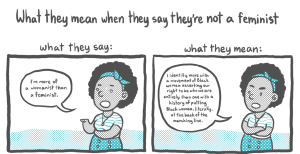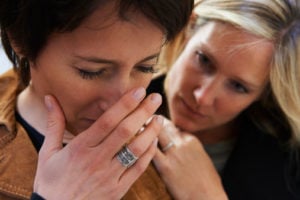
Person sitting with child in Guatemala
Out of the thousands of migrants who die in the desert, more than half can’t be identified. By the time they are found, the heat and elements have rendered their faces and bodies unrecognizable.
This year, the number of migrant deaths at the border have been increasing. There have been 17% more deaths in 2017 at the Mexico border, the International Organization for Migration reports.
In 2000, approximately 1.6 million migrants were stopped by the U.S. Border Patrol compared to 259,107 migrants in 2017.
While the number of people who have successfully crossed the U.S./Mexico border has actually been decreasing in the past decade, the current administration is ramping up border security, making it even more dangerous for those who cross.
The Colibrí Center for Human Rights, a nonprofit based in Tucson, AZ is dedicated to identifying missing migrants on the U.S./Mexico border and supporting their families since 2013.
Colibrí has compiled a complete database nationwide that contains over 2,300 active reported cases of missing migrants and uses forensic science to bring hope to families and solve the mystery of the disappeared.
This process is difficult because many migrants don’t have medical or dental records to use.
Instead, Colibrí staff have to get creative and work with the families to get pictures of their children, pictures of teeth, descriptions of any tattoos, clothing, and listen to them share cherished details that can help identify the migrants.
Naming these migrants and recognizing their stories is important as they are routinely reduced to nothing but bodies to be detained or unclaimed.
This is a human rights crisis right at the United States’ front door that’s been ignored for far too long. It’s time to pay attention.
Why has there been an increase in deaths?
Since the 1990s, the Border Patrol has utilized a strategy known as “Prevention through Deterrence” to stop the flow of migrants crossing the border illegally.
The goal of this strategy was to focus enforcement on the most common entry points in key areas of California, Arizona, and Texas.
With those places being intensely controlled, migrants are forced to go through the most isolated and harshest parts of the desert and end up never crossing the U.S. border — essentially, they die trying.
Between 1990 and 2016, at least 2,776 migrants have died attempting to cross into Arizona. In the fiscal year 2016, the Border Patrol reported the deaths of 322 migrants, up from 251 in 2015.
Some research speculates the increase in migrant deaths could be from the increase in fear of arrest or detainment, pushing migrants to take riskier routes or even use smugglers.
With Trump’s new plans to build a wall on the border, add more Border Patrol officers, and stop chain migration, the lengths that people will take to make it to the United States could intensify.
What motivates migration across the U.S. border?
In 2010, a group of 15 Guatemalan men from the same small town decided to take a big risk. They had been selling handicrafts in their local market and had reached a point where they could no longer provide for themselves.
The United States was a place the men hoped they could get some decent work and support their families, so they decided to migrate together. But they never made it across the border. All 15 of the men died or disappeared in the desert.
Robin Reineke, the executive director of the Colibrí Center, helped work on their cases and identified Cristobal, one of the men who died, thanks to matching DNA samples with his family. While he was gone, his family was selling handmade wooden masks to survive.
While most migrants who go north are able-bodied men, Reineke said it’s common for women to bear a great burden back home coordinating the search process, gathering photos, and following up with any necessary information.
Many women are suddenly left with the responsibility to become the primary financial provider and some even deal with stigmatization for being “abandoned” by their husbands. For the women who do migrate, they’re usually leaving abusive relationships or helping take care of their families.
It’s not just poverty and lack of jobs that create an environment that pushes people to leave their homes for the U.S., but also gang violence, which governments are failing to take care of.
Many of these countries such as Guatemala, Colombia, Honduras and El Salvador are still suffering from corruption, civil war and economic inequality after US intervention.
What can you do?
La Coalición de Derechos Humanos, a grassroots group in Tucson, Arizona that started back in the 1980s, works to raise awareness of migrant abuse and discrimination and border issues.
Every week for 17 years, Isabel Garcia, the founder, and other community members hold a vigil to remember the dead and go on annual pilgrimages to a Tuscon shrine.
“With Trump, everything is just getting worse and the border patrol…I don’t know what’s going to happen. People are going to have to take a stand and protect each other,” Garcia said.
Here are some ways that you can raise awareness about migrant deaths and be an effective ally that can stand and protect.
- Learn more about the history of migration across the U.S./Mexico border and the United States’ destabilization of countries where most migrants are coming from
- Read this report and more
- Learn more about the system of border militarization
- Read this article and this research paper
- Get plugged into sanctuary and immigrant-led movements to work on projects such as:
- Abuse and emergency hotlines
- Know Your Rights workshops
- Community surveys
- Donation drives
- Campaigns against police and other law enforcement getting military equipment
- Documenting stories of migrants and their families
- If you know someone who is searching for a missing loved one and wants help, check out Colibrí Center’s Missing Migrant Project
[do_widget id=’text-101′]
Nesima Aberra is an Everyday Feminism Reporting Fellow. Nesima is a writer and digital strategist passionate about social impact. She received her undergraduate degrees in Journalism and Global Studies from Arizona State University and her master’s degree in International Media from American University. In her free time, she enjoys reading, creative writing, traveling, and performing with The Sanctuaries and the Muslim Writers Collective. Follow her on Twitter: @NesimaAberra.
Search our 3000+ articles!
Read our articles about:
Our online racial justice training
Used by hundreds of universities, non-profits, and businesses.
Click to learn more




















